When you walk through a fresh clearcut in British Columbia, you are surrounded by a “one-dimensional, dead landscape,” says Michelle Connolly of Conservation North, a volunteer conservation group based in the Canadian province.
The forest’s soft, mossy ground, the birdcalls and the cool moisture in the air are gone. In their place, twigs and debris lay everywhere, occasionally interspersed with pieces of garbage. Sound and movement from plants or animals have almost ceased, except for the buzzing of insects. The smell of burned piles of slash — wood debris not profitable enough to bring to a mill — hangs in the air.
“That’s the story of conventional forestry in BC,” Connolly says.
Last month, Connolly visited Japan to share how such scenes are linked to the nation’s “green” energy: A portion of BC’s razed forests are being used to make wood pellets, a type of biofuel that Japan is importing and burning in increasing quantities as an alternative to fossil fuels.
The Japanese government claims wood pellets are “carbon neutral” because trees absorb carbon dioxide throughout their lives and, therefore, do not result in a net increase of atmospheric carbon dioxide when burned. The Agency for Natural Resources and Energy, which is in charge of Japan’s biomass policy, did not respond to a request for comment.
Experts in the field, however, warn that this kind of carbon accounting is dangerously misguided.
Research by British think tank Chatham House details how woody biomass fuels like wood pellets release a large amount of carbon dioxide during combustion — even more than coal — due to having lower energy density. Burning trees for electricity increases atmospheric carbon dioxide in the near term, precisely when the world most needs to reduce greenhouse gas emissions. And when forests are cut, their ability to absorb and sequester carbon is halted for decades.
The Japanese government plans to have biomass contribute 5% of Japan’s power needs by 2030, putting it on par with wind. Hydrogen and ammonia, the government and industry’s controversial long-term bet to decarbonize the power sector, are expected to only contribute 1% by that year.
Japan began seriously investing in woody biomass after the 2011 Fukushima nuclear disaster triggered a sudden shortage of zero-emission energy, as the nation took all of its reactors offline. Beginning in 2012, generous government support for renewable energy projects led to 434 approvals for power plants designed to run either partially or fully on woody biomass, although only 191 had come online as of June 2022 and many don’t use imported pellets.
Still, the country’s wood pellet imports from Canada shot up accordingly, from 76,000 metric tons in 2013 to 1.4 million in 2022, representing 31% of Japan’s total pellet imports that year (other top sources of pellets include Vietnam, the U.S. and Malaysia).
Japan received 40% of all Canadian wood pellet exports in 2022, according to Canadian government statistics. Over the first 10 months of 2023, that figure rose to 55%, with practically all of that coming from BC.
However, Connolly and other experts warn that BC’s overstretched and declining forestry sector may not be able to provide Japan with a steady supply of wood pellets for long — and, for the present, it is leaving a trail of environmental destruction in its wake.
Unknown exploitation
Wood pellets are enmeshed in BC’s forestry industry, and proponents claim that pellets help utilize waste generated from producing other products, such as lumber. The catch, according to Connolly, is that “BC’s forestry system is fundamentally unsustainable.”
The province has experienced roughly a century “of forest exploitation, and the last 60 years of that has been ultra-aggressive,” she adds.
Forest land accounts for roughly two-thirds of BC’s total area, and that’s a large area — the province is three times the size of all of Japan. It’s unknown exactly how much of the province’s 600,000 square kilometers of forest remain untouched by logging, but experts and activists warn that such “primary forests” are dwindling. Although BC does release figures for “old growth” logging, primary forests represent a wider category of ecosystems that don’t contain signs of human disturbance but whose trees might not fit the definition of “old growth.”
The results of a government-initiated strategic review of old-growth forests in BC noted in 2020 that the province’s “economy is heavily dependent on trees harvested from primary forests of old trees.” This is especially true of logging in the province’s interior, where “large-scale commercial cutting of primary forests” began 50 or fewer years ago and where it can take “several decades” for replanted trees to be ready for a second harvest.
BC’s pellet industry is located in the interior. As a result, wood pellet feedstock likely comes from clearcut primary forest, whether a pellet mill uses byproducts such as sawmill waste or whole trees sourced directly from a logging site.
Connolly’s home city, Prince George, lies in an area of the BC interior where forests are currently being harvested — in part, for pellets.
From 2017, 9% of the output of the 80,000-square-kilometer Prince George timber supply area has been set aside for “bioenergy stands” — trees fit for logging for pellets — defined as “mature, damaged pine-leading stands” with relatively low marketability as saw logs.
However, Andrew Weaver, a professor at the University of Victoria’s School of Earth & Ocean Sciences and a former member of the province’s Legislative Assembly, told The Japan Times that even harvesting such “damaged” stands could set a dangerous precedent. After being cut, replanted trees will take decades to grow, during which time the wood pellet industry will need more raw materials. The impacts of climate change also make a future second harvest less predictable, Weaver added.
Connolly argues that BC’s remaining primary forest would be better left as-is.
Primary forests are the best habitat for much of BC’s wildlife, especially large-bodied mammals, including critically endangered caribou, as well as bears that make dens in large tree trunks. They also keep watersheds clean, an essential ecosystem service that benefits both animals and people (Vancouver, the province’s economic capital, has banned logging in its watersheds since the 1990s).
In addition, primary forests contribute significant carbon sinks, with much carbon dioxide stored in large, old trees and undisturbed soil and peat. Scientists note that primary forests are more effective at storing carbon than single-species plantation forests; it can take centuries for a replanted forest to store as much carbon as the primary forest it replaced.
Currently, U.K.-headquartered Drax — a utility at home and a pellet producer in Canada and the U.S. — controls eight of 12 BC pellet mills, roughly 80% of the province’s total wood pellet production capacity.
At its mills, huge piles of trees await processing. Although the company previously claimed to only use “sawdust and waste wood,” a 2022 investigation by BBC Panorama found evidence that Drax was also sourcing directly from primary forests. Drax responded to the BBC investigation by saying that 80% of its source material is “sawmill residues” and the rest is “waste material” from forests at risk of fire or disease.
“In Canada, good forest management includes managed removals, which create less dense stands of trees and reduce what’s left lying on the forest floor, helping to protect from fires, pests and diseases, and preserving biodiversity,” a Drax spokesperson told The Japan Times in an email. “We support good forest management by providing a market for this material and turning it into something useful — sustainable biomass — which can be used as fuel for renewable, low carbon power.”
During her trip to Japan, Connolly felt that Japanese audiences — including wood pellet stakeholders, media and members of the general public — were puzzled and disappointed to learn how BC’s primary forests are being turned into wood pellets.
“It was actually really emotional for me to see people’s faces fall,” Connolly says.
A finite amount of wood
Although wood pellets are often billed as a “sustainable” resource, there may be a limit on the amount of pellets BC can provide Japan, warned Ben Parfitt, a resource policy analyst for the Canadian Center for Policy Alternatives who also covered forestry in BC for many years as a journalist. Parfitt traveled to Japan with Connolly to speak about wood pellets.
BC’s logging industry, which pellet manufacturers rely on, is shrinking. Roughly 51.3 million cubic meters of timber were logged in 2022, down from 76.6 million in 2013, according to data Parfitt compiled from government statistics. Many companies are moving their operations to the southern U.S., where trees grow faster in a milder climate on already extensive forest plantations. The number of sawmills in BC is also decreasing, down from 111 in 2005 to 64 in 2023.
In Parfitt’s view, the logging industry is contracting primarily because it logged too much, too quickly. “They have run out of the easiest-to-access and cheapest fiber,” he said.
With logging in decline, Parfitt predicted increasing competition for resources going forward.
“That’s pretty much where, I think, the rubber hits the road,” he concludes. “There’s a finite amount (of wood) out there.”
In a public event during his visit to Japan, Parfitt highlighted both Drax’s overwhelming control of BC’s wood pellet industry and the fact that the company itself consumes vast quantities of wood pellets at its own power plant in the U.K. As competition for resources intensifies, the decisions Drax makes going forward could potentially have a big impact on Japan’s wood pellet supply, Parfitt warned.
The company itself brushed off such concerns, saying in its statement to The Japan Times that it responsibly manages its commercial agreements and closely analyzes market issues affecting itself and its suppliers.
“The majority of the sustainable biomass we supply to Japan is sourced from British Columbia in Canada where the forests are sustainably managed and subject to environmental regulation, careful management and third-party certification,” the Drax representative wrote.
Still, Parfitt is not alone in his concern over the future of Japan’s supply of BC wood pellets. Weaver too sees BC’s relatively slow-growing forest resources as “mismatched” with the wood pellet industry and its eager customers in Japan. Wood pellets aren’t anything more than a “short-term fix” for the country’s energy needs, he said.
Going forward, Weaver suggested that Japan, known abroad as a nation of innovators, could show more international leadership in renewable energy.
“Burning wood is literally what our ancestors and Neanderthals did many hundred thousands of years ago,” he says. “Surely we’re better than that.”










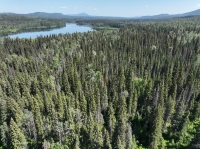
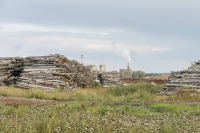

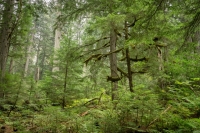

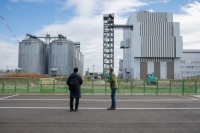
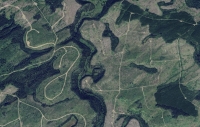















With your current subscription plan you can comment on stories. However, before writing your first comment, please create a display name in the Profile section of your subscriber account page.